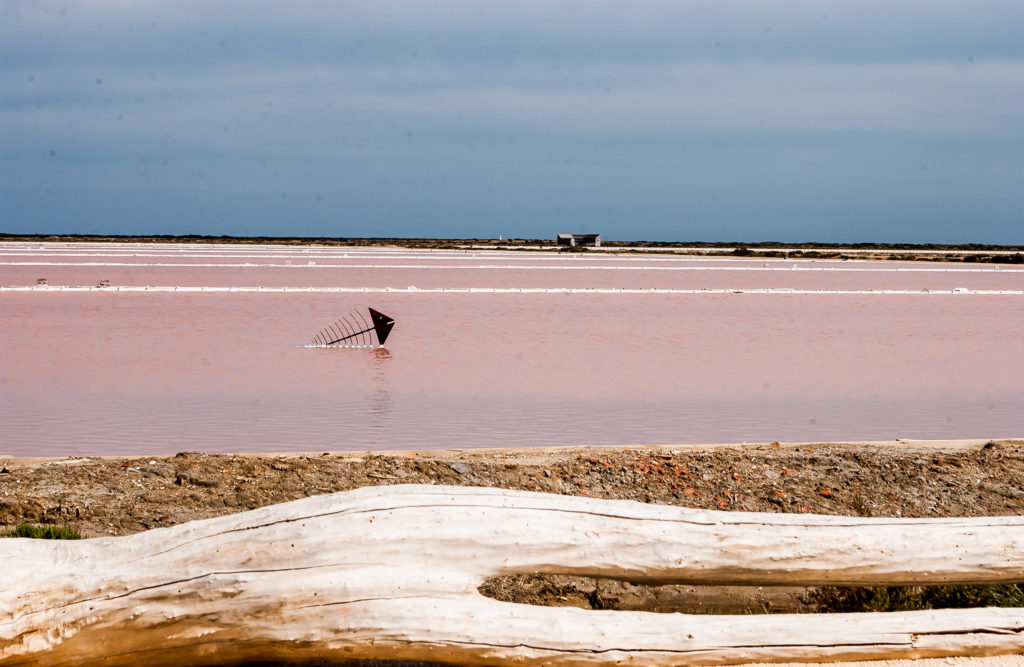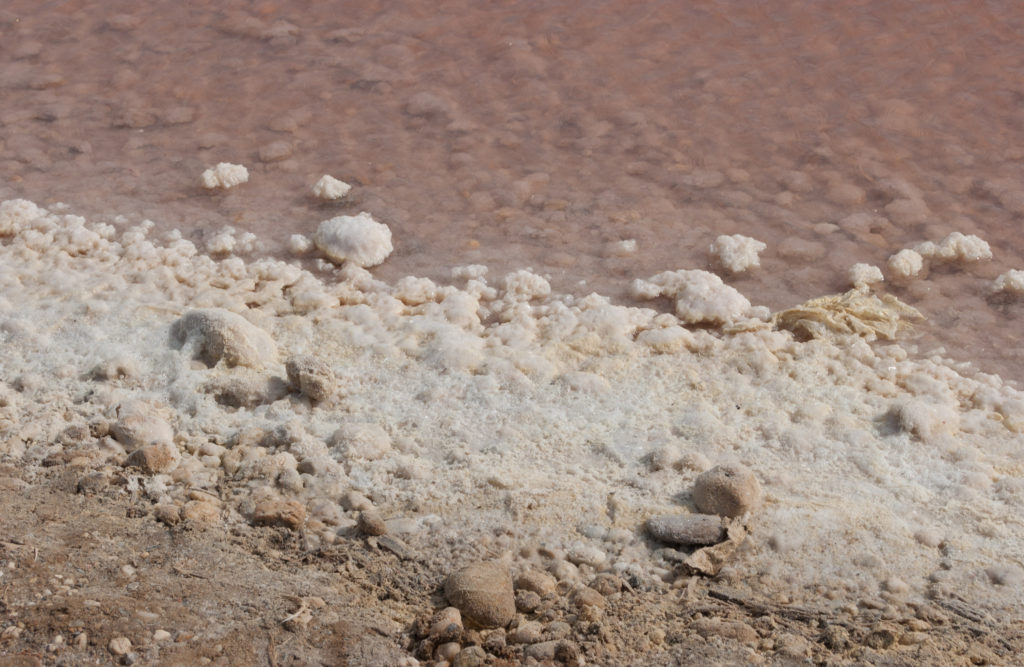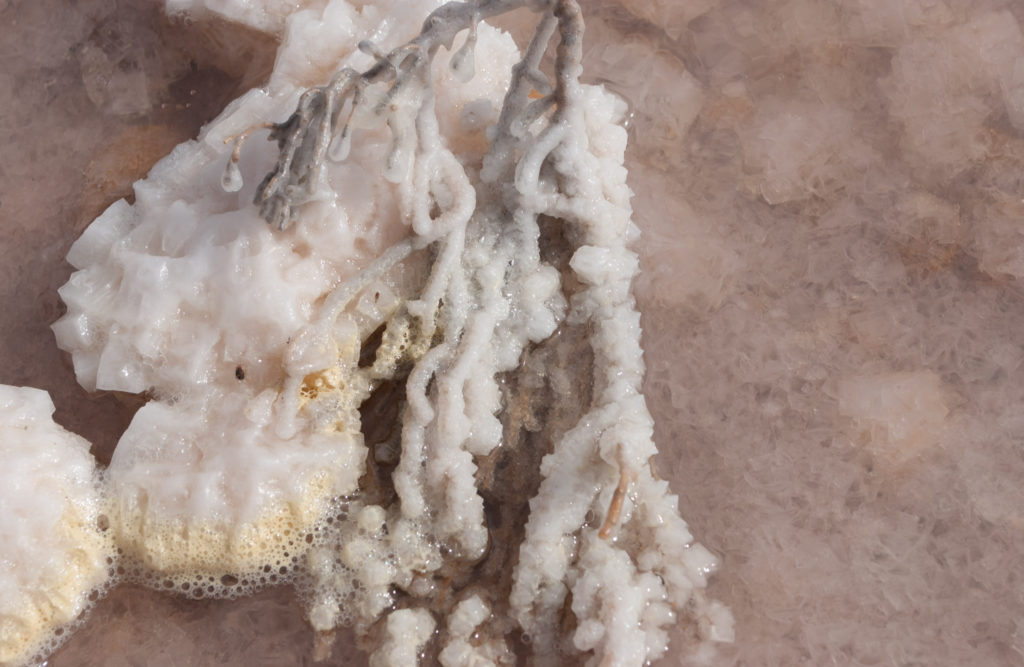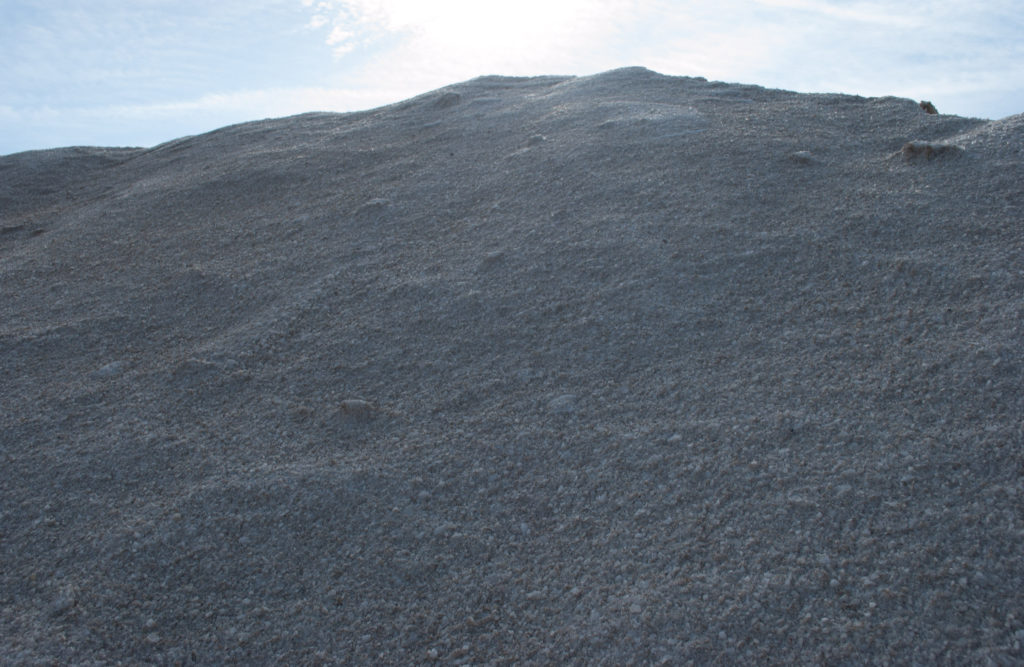Salt, we shake it on our food and worry about it in our ready meals. Nick Harman goes to the south of France to see how gourmet sea salt is produced for foodie tables
The sea here is a weird lilac in colour. It stretches flat as an ironing board away to the horizon, divided into giant gaming squares by strips of narrow land. These seem to be covered in thick snow, but the sun’s heat, even now at mid-afternoon, means that can’t be the case.

The white is in fact salt, lots and lots of salt. It’s everywhere, crunching under my feet and it can be tasted in the air. I put my hand into the water and just below the surface I break off a lump of salt formed into perfect sugar cube pieces, each as smooth as the non-locking part of a Lego brick. I lick it tentatively and the saline kick is enormous and at the same time, in its own way, delicious
This salt is in its final stages of production at Salin de l’Ile Saint Martin. Each giant salt pan represents another stage in the journey from pure Mediterranean salt water to pure Mediterranean salt. At each step the proportion of salt to water increases as the water evaporates away in the sun and the wind. The surreal and rather beautiful lilac or pink colour that is so striking is caused by a type of naturally forming algae that produces a chemical substance when sunlight falls onto it.

The wind across the pans is powerful, it rocks me every time I misstep and snatches the words of my guide away and blows them into town. This same wind picks up salt water from the pans and then drops salt onto the land where it’s gathered as’fleurs du sel’, the finest salt of all. So delicate that it can be crushed between finger and thumb, it’s sought after for gourmet tables here in the South of France and elsewhere.
Given salt’s corrosive nature it’s remarkable how much plant life surrounds the salterns. These plants are mostly halophiles, plants that have evolved to live with salt. Around the salterns samphire grows wildly, its flavour totally imbued with the natural salts and minerals. Many special birds live here too, protected by the habitat and the care that the workers take as they carry out a trade that’s been known here since 100 BC, although the salt pans today were created in 1911.

A guided tour of the salt pans takes around 90 minutes and it’s an eye-opener. Salt isn’t just salt, it’s vital to life; in ages past a worker was often paid in salt hence the expression’ worth his salt’ and it was traded just as much as any spice, both as a food preservative and as a cooking ingredient. Nations have even gone to war over salt.
You can of course buy cheap rock salt extracted from underground salt mines and just like sea salt it’s more than 99% sodium chloride. The difference in price between the two (common table salt is around 8p per 100g.while sea salt around £1.80 per 100g) comes from the fact that sea salt is said to contain more natural minerals, gets more flavour out of the food and of course is fashionable with foodies.. But the claims that sea salt is’better for you’ are being challenged and whatever your preference you still don’t want to exceed the WHO recommended daily intake of less than 5g a day.
In the nearby salt shop though they encourage consumption, here you can buy salt by the scoop flavoured with chilli, coriander, bay, fennel, rosemary and garlic, as well as fleur du sel at prices a fraction of the gourmet shops in London.

I bought a big bag myself despite concerns about my baggage allowance, then went to La Cambuse du Saulnier restaurant a few yards away where at a wooden table outdoors I feasted on fresh oysters grown just across the water, as well as prawns and’ boulots’ (knots) – a kind of whelk.
The sea air was briskly crossing the flats, bringing it with it the appetite-inducing tang of saline, and French families were beginning to arrive for early evening seafood degustations. It was a salty moment to savour.
Thanks to sud-de-france.com where you can find more information on food and travel in the region.
Tourism in Languedoc-Roussillon: destinationsuddefrance.com
Les Salins de l’île Saint Martin Route de l’Ayrolle 11430 Gruissan www.lesalindegruissan.fr
